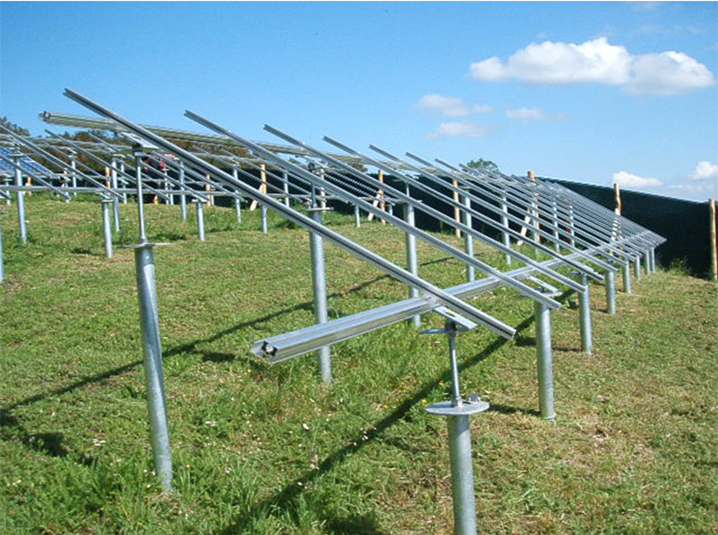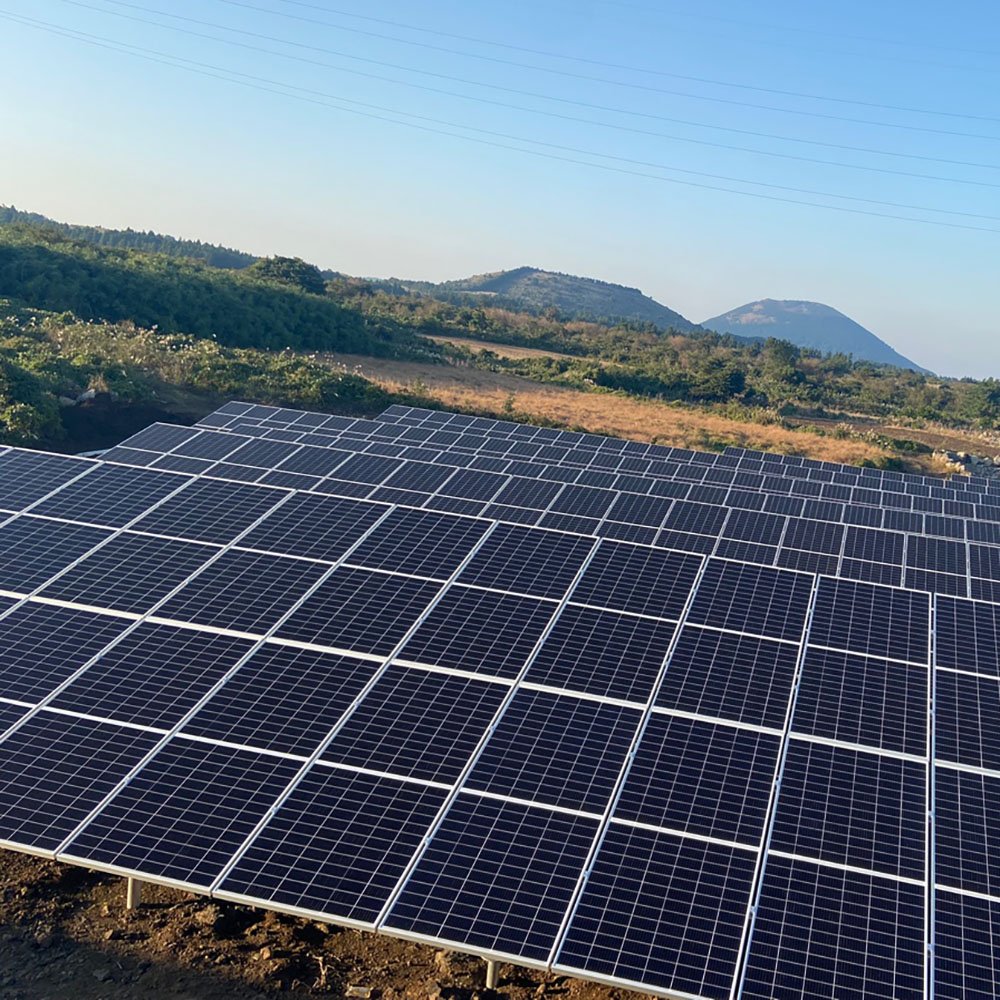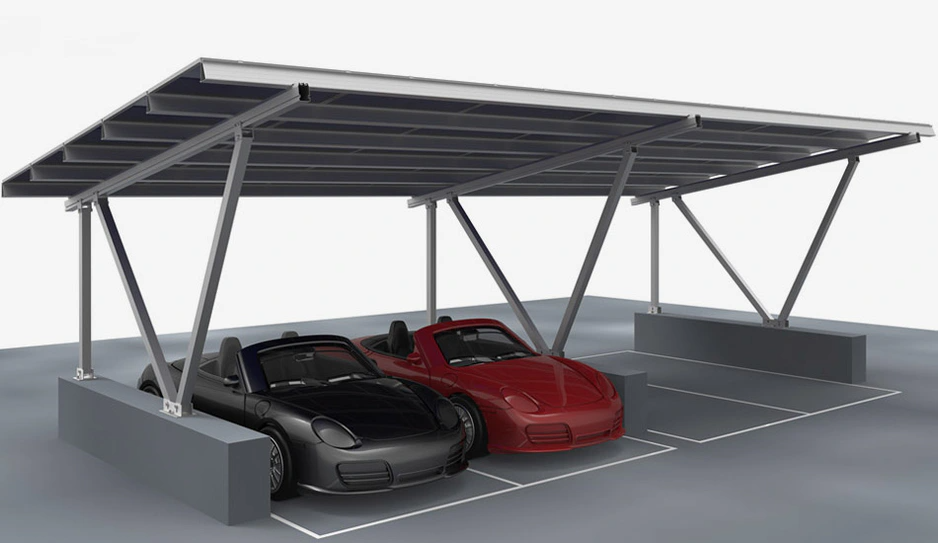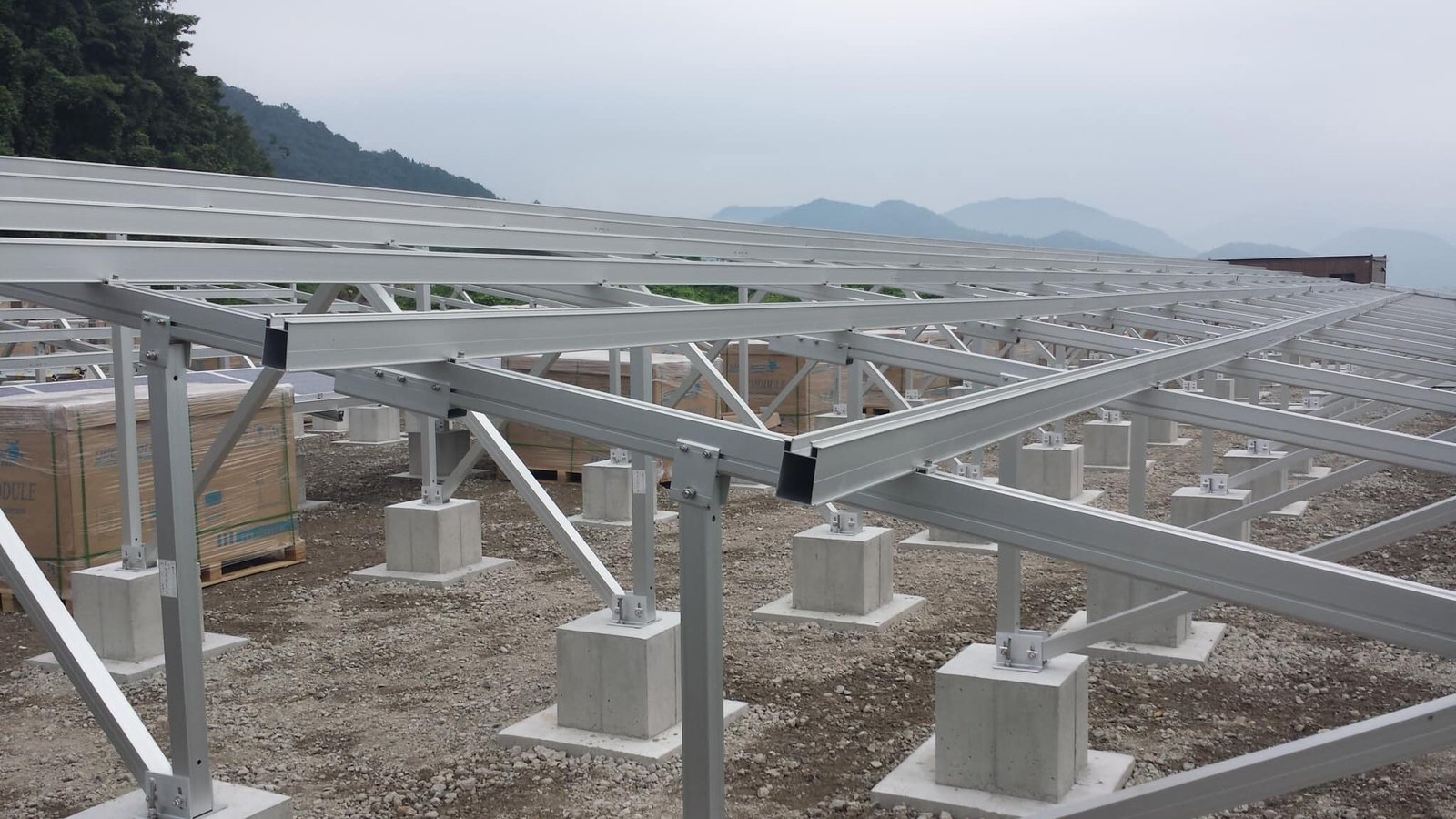-
中国福建省アモイ市海滄区興港一路322号2103室

Ground-Mounted Solar Support Foundation Design: Key Requirements and Best Practices
Solar panels can be installed either on rooftops or on the ground. This article focuses specifically on the design and requirements of ground-mounted solar support foundations, which are essential for ensuring the safe, stable, and long-term operation of solar power plants.
Related Product: 地上設置型ソーラーシステム
Table of Contents
Importance of Solar Support Foundations
The foundation is the critical structure that transfers all forces from the solar support frame and panels into the ground.
Although foundation costs are relatively small compared to the entire solar plant investment, their reliability directly impacts the plant’s operational stability and economic performance.
Key Design Considerations
Structural Stability
The foundation must ensure:
- Vertical load capacity (compression, uplift resistance)
- Horizontal load capacity (wind, seismic forces)
- Overall stability under various weather conditions
Seismic Foundation Bearing Adjustment Formula:
FsE = §s × Fs
Where:
- FsE = adjusted seismic foundation design value
- §s = seismic adjustment coefficient (refer to local seismic design codes)
- Fs = static bearing design value (according to foundation design standards)
Example: In Japan, adherence to [JIS C 8955:2017] standards ensures seismic safety.
Load Conditions
The design must consider:
- Solar panel size, weight, and layout
- Natural forces like wind load, snow load, and seismic activity
The most common foundation types include:
- Concrete Cast-in-Place Piles
- Precast Concrete Piles
- Steel Pile Platforms
📷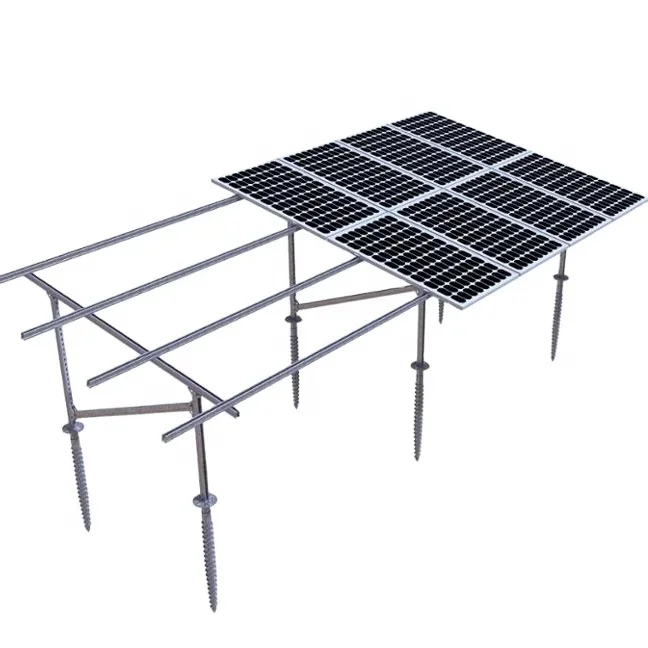
Types of Foundations
Concrete Cast-in-Place Piles
- Mechanized drilling makes the process efficient.
- Height adjustments are easier on uneven ground.
- Limitations: Not ideal for weak soils, loose sand, fractured rocks, or high groundwater areas.
- Winter construction can be challenging due to on-site concrete curing.
Precast Concrete Piles
- Commonly use 300mm diameter prestressed concrete pipes or 200x200mm reinforced square piles.
- Offer good performance even under challenging weather conditions.
- Higher cost but shorter construction timelines, crucial in places like China’s inland regions.
📷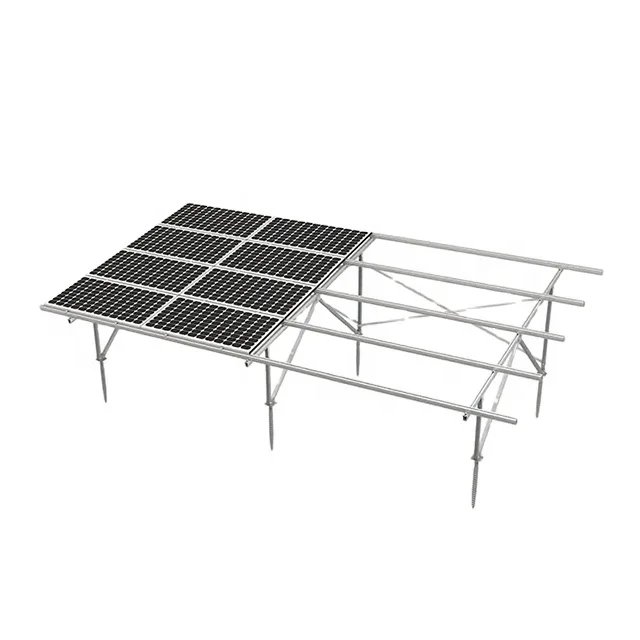
Construction Process Overview
Main Steps
- Site Preparation: Leveling and surveying
- Excavation and Positioning: Digging pits and setting embedded parts
- Formwork and Concrete Pouring: Follow correct ratios and curing practices
- Foundation Surface Finishing: Smooth, level, and precise placement of anchor bolts
Concrete strength requirements:
- Concrete Block: ≥ MU10
- Mortar Strength: ≥ M5
- Concrete Grade: ≥ C20
- Recommended Size: 500mm × 500mm × 400mm
Note: If soil is loose, increase foundation depth accordingly.
📷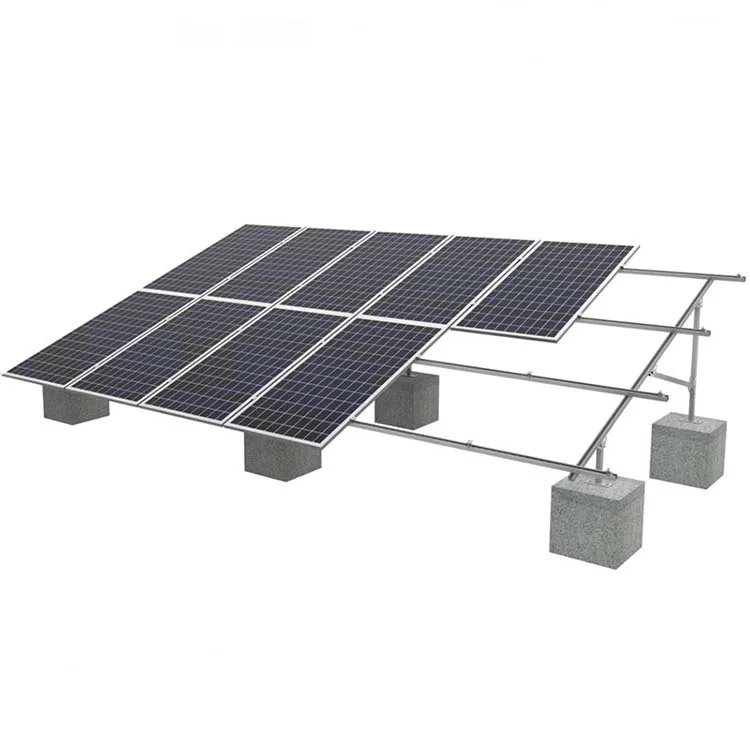
Environmental Considerations
When designing foundations, it’s crucial to:
- Analyze soil bearing capacity そして topographical characteristics.
- Avoid placing one array structure across drastically different soil conditions.
- Strengthen foundations if liquefaction-prone soils or newly filled soil layers are present.
Typical Reinforcement Measures:
- Deep Foundations: Embed the foundation >500mm into stable soil below liquefaction depth.
- Ground Improvement Methods: Vibro-compaction, dynamic compaction, or grouting to solidify loose soils.
Example: In coastal areas of China’s Jiangsu Province, dynamic compaction is often applied to stabilize loose soils before solar installation.
結論
A well-designed and properly executed ground-mounted solar support foundation ensures the long-term durability, safety, and performance of a solar plant. Considering structural loads, seismic forces, construction methods, and local soil conditions will lead to higher efficiency and lower maintenance costs over the system’s lifespan.
Related Links
- 🌿 農地用ソーラー架台
- 🛠️ 地上設置型ソーラーシステム
- 🧱 Concrete Block Foundation for Solar Structures
- 🔩 C-Steel Ground Mount – Screw Pile Foundation
- ⚙️ アルミニウム地中埋込型 - ねじ杭基礎



